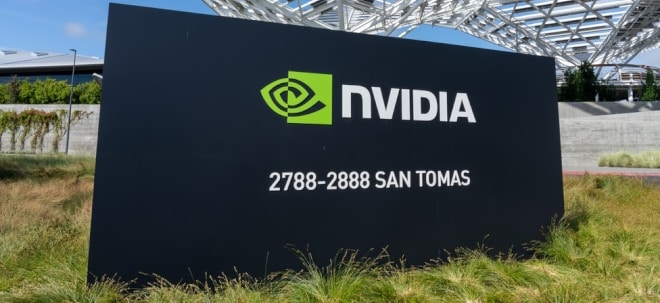RTX vs Lockheed Martin: Which Defense Stock Is the Stronger Player Now?
Werte in diesem Artikel
With rising global defense budgets and increased focus on military modernization, defense contractors like RTX Corp. (RTX) and Lockheed Martin Corp. (LMT) are witnessing sustained demand for next-generation aircraft, missile systems and critical defense technologies. Their strong backlog of government contracts ensures revenue visibility and positions them to capitalize on long-term security spending trends.Notably, RTX offers a diversified portfolio with products ranging from commercial jet engines and avionics to space sensors, military radars, and Satcom systems. Lockheed, on the other hand, is a renowned provider of flagship defense programs like the F-35 fighter jet, Patriot and THAAD missiles, as well as littoral combat vessels, along with cutting-edge space solutions like the Orion spacecraft.As expanding defense budgets worldwide, coupled with growing hostilities and the advent of modern military technologies, pave the way for sustained growth for both RTX and LMT, defense investors may find themselves in a quandary over which company to invest in right now. The answer is discussed below in terms of their strengths and weaknesses.Financial Stability & Growth Drivers: RTX vs LMTAs of the second quarter of 2025, RTX held cash and cash equivalents worth $4.78 billion, with a current debt value of $3.72 billion remaining well below its cash reserve. This reflects a solid liquidity position for the stock. Also, RTX’s current ratio of 1.01 (as of June 30, 2025), being more than 1, reflects that it has sufficient capital to pay off its short-term debt obligations. Such a solid financial position and a robust cash flow of $1.76 billion from operating activities enable RTX to make shareholder-friendly decisions. Notably, RTX repurchased shares worth $50 million and paid dividends worth $1.75 billion in the first six months of 2025. In contrast, Lockheed’s cash and cash equivalents at the end of the second quarter of 2025 totaled $1.29 billion. Its long-term debt, as of June 29, 2025, amounted to $18.52 billion, while its current debt was $3.12 billion. With both its long-term and current debt values exceeding its cash balance amount, it is reasonable to conclude that the stock holds a poor solvency position. Further, its cash flow from operations declined year over year to $1.61 billion at the end of June 2025, which further raises a red flag about its liquidity.Despite repurchasing $1.25 billion in shares and paying $1.57 billion in dividends in the first half of 2025, Lockheed’s weak financial condition may hinder its ability to sustain such shareholder rewards going forward.As far as growth catalysts are concerned, both LMT and RTX are poised to benefit from the expanding U.S. defense budget. In May 2025, the White House proposed a 13% increase in defense spending to $1.01 trillion for fiscal 2026. In particular, this budget proposal prioritizes investment in U.S. space dominance with a proposed funding worth $40 billion toward the Space Force, which represents a 30% increase in funding from fiscal 2025. It also includes funding provision of $25 billion for the proposed Golden Dome — a next-generation missile defense shield — as well as $2.5 billion for missile and munitions production expansion for the missile defense initiative. With both RTX and Lockheed being prominent defense contractors, with established footprints in missile defense and strong positions in space exploration, the enhanced funding provisions offered by the U.S. government should significantly boost their revenue growth in the coming quarters.For RTX, a steadily improving commercial air traffic acts as an additional major growth headwind, unlike that for LMT, whose revenues are primarily defense-focused. Notably, RTX’s second-quarter 2025 results reflected solid organic year-over-year sales growth of 9%. A major portion of this improvement was driven by double-digit growth witnessed in the company’s commercial aftermarket sales, along with a high-single-digit increase in commercial OEM sales. With the International Air Transport Association (“IATA”) projecting 5.8% year-over-year passenger traffic growth in 2025, RTX remains well-positioned to capitalize on strengthening commercial aviation trends.Risks of Investing in RTX vs LockheedRTX’s exposure to the commercial aviation industry makes it more vulnerable to supply-chain constraints that have been impacting the commercial side of the aerospace sector more than the defense side, somewhat cushioned with government support. To this end, IATA predicts that airlines are short of 5,400 aircraft, assuming this backlog increase was induced solely by delivery delays. Given the expected annual production of around 2,000 aircraft, IATA projects that it would take 3-5 years to clear this huge amount of backlog. This, in turn, poses a near-term threat to RTX by prolonging its revenue realization from engine sales and amplifying supply-side pressures in an already constrained production environment.Meanwhile, both Lockheed and RTX are contending with broader industry challenges, including labor shortages. As per the 2025 Workforce Study report released by the Aerospace Industries Association (“AIA”), in collaboration with McKinsey, although the attrition rate in the industry has dropped from a peak of 17% in 2022 to approximately 14.5% in 2024, it remains significantly higher than the average of other U.S. industries that range between 2.5% and 7%. Such a higher-than-average attrition rate in the aerospace-defense industry can lead to production delays and quality control issues due to the loss of experienced talent. Such persistent labor challenges might affect defense manufacturing stocks like Lockheed and RTX in not being able to deliver the finished products in the stipulated timeline. This, in turn, may hurt their future operating results.How Do Zacks Estimates Compare for RTX & LMT?The Zacks Consensus Estimate for RTX’s 2025 sales and earnings per share (EPS) implies an improvement of 6.1% and 3.5%, respectively, from the year-ago quarter’s reported figures. However, RTX’s EPS estimates have moved south over the past 60 days.Image Source: Zacks Investment ResearchThe Zacks Consensus Estimate for Lockheed’s 2025 sales implies a year-over-year rise of 4.6%, and the same for earnings suggests a decline of 21.3%. The stock’s annual bottom-line estimates have moved south over the past 60 days.Image Source: Zacks Investment ResearchStock Price Performance: RTX vs LMTRTX (up 16.4%) has outperformed LMT (down 6.1%) over the past three months. In the past year, RTX has outperformed LMT. While RTX’s shares surged 30.8%, LMT went down 20.1%.Image Source: Zacks Investment ResearchLockheed’s Valuation More Attractive Than RTXLockheed is trading at a forward earnings multiple of 16.56, below RTX’s forward earnings multiple of 24.49. When compared to their respective five-year median, both RTX and LMT’s forward earnings multiples look a bit stretched.Image Source: Zacks Investment ResearchROE: RTX vs LMTThe image below reflects the return on equity (ROE) for RTX and Lockheed. This shows that LMT is better at converting its equity financing into profits compared to RTX.Image Source: Zacks Investment ResearchFinal CallAmid robust global defense spending and the U.S. government’s prioritization of next-generation military and space programs, Lockheed remains a strong contender in the defense space. While RTX offers diversified exposure across commercial and defense segments, its reliance on commercial aerospace makes it more vulnerable to persistent supply-chain disruptions, and its premium valuation implies its overvaluation. Lockheed, in contrast, maintains a commanding presence in flagship defense platforms, enjoys a higher return on equity, and trades at a more attractive valuation, even though its leverage and liquidity profile warrant close monitoring.Lockheed carries a Zacks Rank #3 (Hold), while RTX has a Zacks Rank #4 (Sell). You can see the complete list of today’s Zacks Rank #1 (Strong Buy) stocks here. 7 Best Stocks for the Next 30 DaysJust released: Experts distill 7 elite stocks from the current list of 220 Zacks Rank #1 Strong Buys. They deem these tickers "Most Likely for Early Price Pops."Since 1988, the full list has beaten the market more than 2X over with an average gain of +23.5% per year. So be sure to give these hand picked 7 your immediate attention. See them now >>Want the latest recommendations from Zacks Investment Research? Today, you can download 7 Best Stocks for the Next 30 Days. Click to get this free report Lockheed Martin Corporation (LMT): Free Stock Analysis Report RTX Corporation (RTX): Free Stock Analysis ReportThis article originally published on Zacks Investment Research (zacks.com).Zacks Investment ResearchWeiter zum vollständigen Artikel bei Zacks
Übrigens: Lockheed Martin und andere US-Aktien sind bei finanzen.net ZERO sogar bis 23 Uhr handelbar (ohne Ordergebühren, zzgl. Spreads). Jetzt kostenlos Depot eröffnen und Neukunden-Bonus sichern!
Ausgewählte Hebelprodukte auf Lockheed Martin
Mit Knock-outs können spekulative Anleger überproportional an Kursbewegungen partizipieren. Wählen Sie einfach den gewünschten Hebel und wir zeigen Ihnen passende Open-End Produkte auf Lockheed Martin
Der Hebel muss zwischen 2 und 20 liegen
| Name | Hebel | KO | Emittent |
|---|
| Name | Hebel | KO | Emittent |
|---|
Quelle: Zacks
Nachrichten zu Lockheed Martin Corp.
Analysen zu Lockheed Martin Corp.
| Datum | Rating | Analyst | |
|---|---|---|---|
| 25.07.2018 | Lockheed Martin Buy | Stifel, Nicolaus & Co., Inc. | |
| 29.03.2018 | Lockheed Martin Equal Weight | Barclays Capital | |
| 30.01.2018 | Lockheed Martin Buy | Stifel, Nicolaus & Co., Inc. | |
| 25.10.2017 | Lockheed Martin Buy | Stifel, Nicolaus & Co., Inc. | |
| 25.10.2017 | Lockheed Martin Sector Perform | RBC Capital Markets |
| Datum | Rating | Analyst | |
|---|---|---|---|
| 25.07.2018 | Lockheed Martin Buy | Stifel, Nicolaus & Co., Inc. | |
| 30.01.2018 | Lockheed Martin Buy | Stifel, Nicolaus & Co., Inc. | |
| 25.10.2017 | Lockheed Martin Buy | Stifel, Nicolaus & Co., Inc. | |
| 14.11.2016 | Lockheed Martin Buy | Stifel, Nicolaus & Co., Inc. | |
| 09.11.2016 | Lockheed Martin Buy | Deutsche Bank AG |
| Datum | Rating | Analyst | |
|---|---|---|---|
| 29.03.2018 | Lockheed Martin Equal Weight | Barclays Capital | |
| 25.10.2017 | Lockheed Martin Sector Perform | RBC Capital Markets | |
| 25.01.2017 | Lockheed Martin Sector Perform | RBC Capital Markets | |
| 12.01.2017 | Lockheed Martin Sector Perform | RBC Capital Markets | |
| 10.11.2016 | Lockheed Martin Equal Weight | Barclays Capital |
| Datum | Rating | Analyst | |
|---|---|---|---|
| 02.05.2016 | Lockheed Martin Underweight | Barclays Capital | |
| 30.11.2015 | Lockheed Martin Underweight | Barclays Capital | |
| 26.04.2007 | Lockheed Martin underweight | Prudential Financial | |
| 28.02.2007 | Lockheed Martin Downgrade | JP Morgan | |
| 29.01.2007 | Lockheed Martin underweight | Prudential Financial |
Um die Übersicht zu verbessern, haben Sie die Möglichkeit, die Analysen für Lockheed Martin Corp. nach folgenden Kriterien zu filtern.
Alle: Alle Empfehlungen


